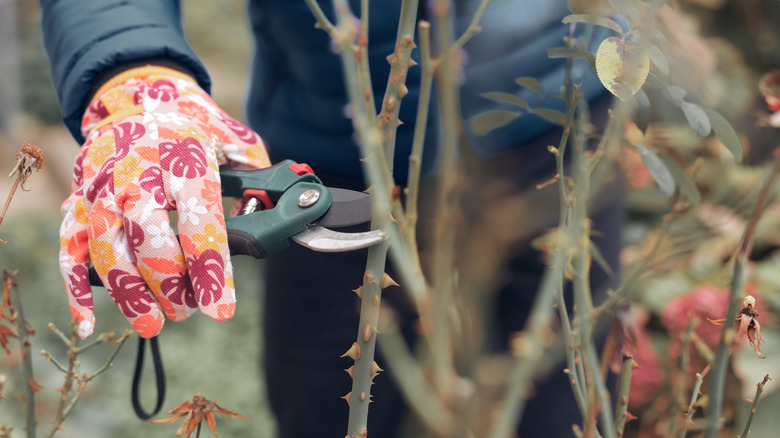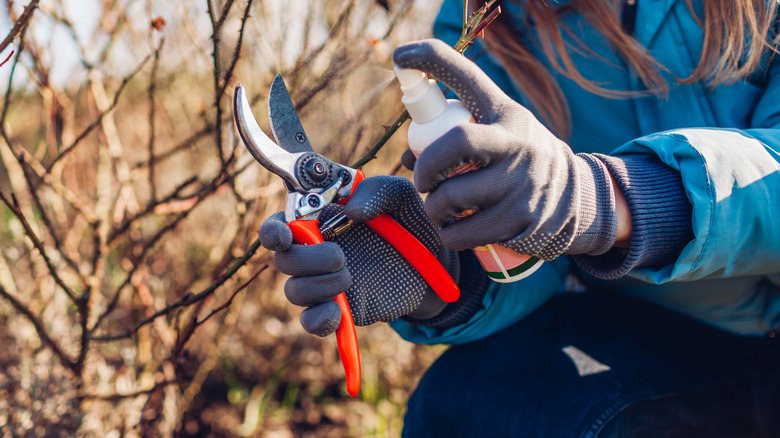Why Pruning Your Roses Too Late Is A Big Mistake
It is tradition in many Southern parts of the United States to prune roses on or around Valentines Day. While you don't necessarily have to do this chore on February 14th exactly, reblooming roses should be pruned just as their buds start to swell. This happens to be around mid-February in many warmer areas. Of course, going by an arbitrary date on the calendar could be too late for pruning roses in some regions and too early in others. Waiting too long to prune your roses can make the plants more vulnerable to diseases and insects that become increasingly common as the weather heats up. Less seriously, it could also result in fewer flowers, especially in the earlier part of the season.
It's important to keep in mind that late winter or early spring pruning isn't for all types of roses. It's only roses that bloom repeatedly throughout the summer that should be pruned during this time of year. If you try to prune once-blooming roses in the late winter, you'll likely get few, if any, flowers for the season, as once-blooming roses only bloom on old wood. This would be an even worse mistake than pruning your repeat blooming roses a bit late.
Time your rose pruning to get healthy plants and plenty of blooms
As long as you've confirmed that your roses are a reblooming variety, you should aim to prune them sometime in late winter or early spring. While the date may vary depending on your region, it's generally best to prune your reblooming roses about two weeks to a month before your last frost. Some people remember this by pruning their roses when their forsythia blooms. If you wait too long to prune, your roses will start to grow, forcing you to trim off their new growth, and leaving you waiting longer for flowers. The pests and diseases that can make roses such difficult plants to grow are also more likely to be circulating if you wait too long to prune your roses.
To minimize the chance of spreading any diseases when pruning your roses, be sure to sanitize your pruning shears between each plant. Some people even opt to seal their pruning cuts with glue to decrease the chance of the soft insides of the rose stems becoming infested with bugs. Pruning before too many insects emerge in spring gives your roses the best chance at a healthy growing season.

